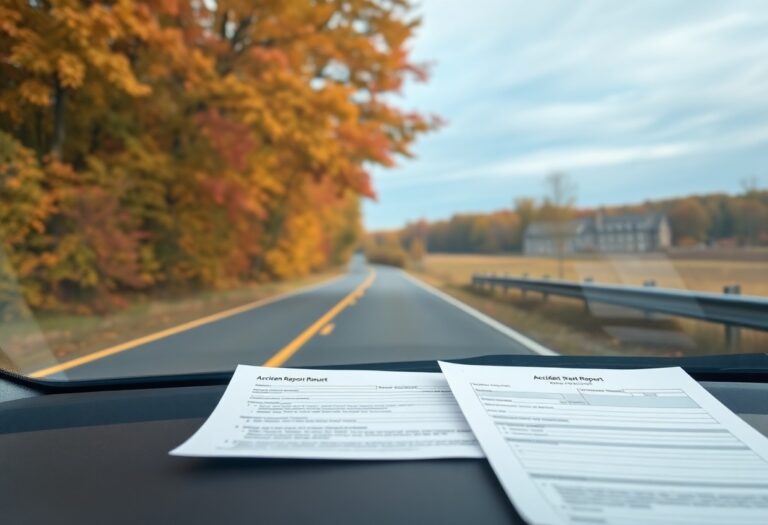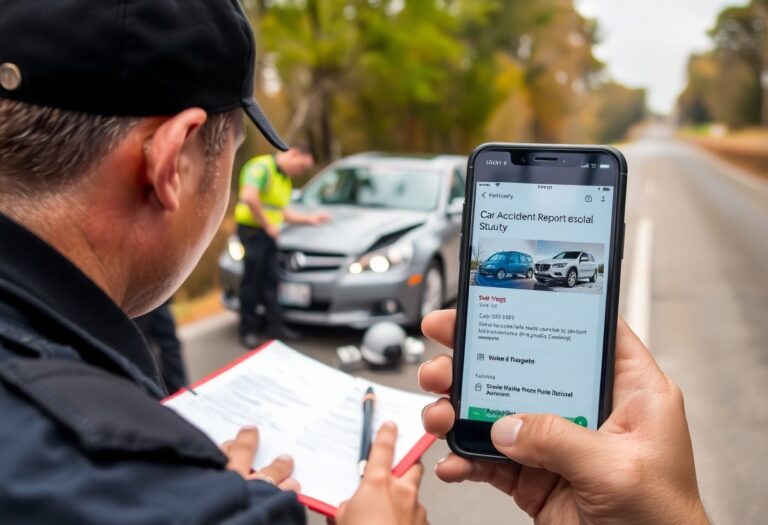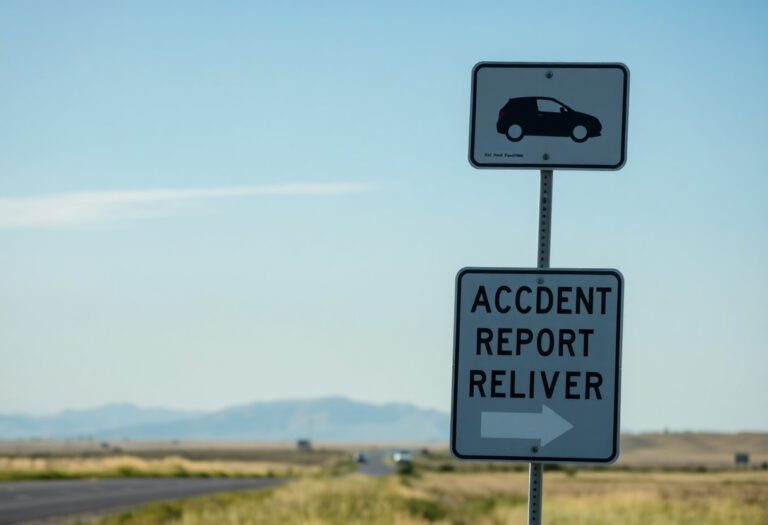You can easily access car accident reports in Fannin County, Texas, enhancing your ability to manage the aftermath of an incident. This streamlined process will allow you to obtain the necessary documentation quickly, ensuring that you can file insurance claims or pursue legal action with confidence. By following the outlined steps, you will save time and avoid the frustrations often associated with bureaucratic procedures. Get ready to simplify your experience and focus on what truly matters: your recovery and peace of mind.
Navigating Fannin County’s Accident Reporting System
Accessing your car accident report in Fannin County may seem overwhelming, but familiarizing yourself with the reporting system makes the process straightforward. After an accident, the first step is to retrieve the report from local law enforcement, typically the Fannin County Sheriff’s Office or the city police department, depending on where the incident occurred. Utilizing their online services, you can fill out the necessary forms and request your report with ease.
Key Contact Information
Your primary point of contact for accident reports is the Fannin County Sheriff’s Office. You can reach them at (903) 583-2143 or visit their website for additional resources. Local city police departments also maintain records, so make sure to check which department responded to your accident for the most accurate information.
Understanding Local Laws and Protocols
Familiarity with local laws and reporting protocols enhances your ability to efficiently obtain your accident report. In Texas, law enforcement is required to file a report for accidents resulting in injury, death, or significant damage exceeding $1,000. This law ensures that thorough documentation exists, which can be critical for insurance claims and potential legal disputes. For claims related to personal injury processing, you’ll also need to understand the statute of limitations, typically two years in Texas, to ensure you file your claim on time.
How to Obtain Accident Reports Efficiently
Requesting your car accident report efficiently can save time and ensure you have the documentation you need for insurance claims or legal reasons. Understanding the processes, whether online or in person, allows you to choose the method that best suits your situation.
Step-by-Step Process for Requesting Reports
Follow this simple process to obtain your accident report:
| Steps | Description |
|---|---|
| 1. Gather Information | Collect details such as the date, location, and names involved in the accident. |
| 2. Choose a Method | Decide whether you’ll request the report online or in person. |
| 3. Complete the Request Form | Fill out the necessary forms with accurate information. |
| 4. Submit Your Request | Follow through with either payment and submission for online requests or visit the appropriate office for in-person requests. |
| 5. Receive Your Report | Wait for the report to be processed and sent to you, typically within a few business days. |
Online vs. In-Person Requests
Both online and in-person request options offer distinct advantages based on your preferences and circumstances. Online requests provide convenience and immediate confirmation, while in-person visits allow you to ask questions and resolve issues on the spot.
Choosing between online and in-person requests depends largely on your urgency and comfort level. Online requests are generally faster, typically processed within a few business days, allowing you to obtain your report from the comfort of home. Conversely, if you have concerns or specific queries about your report, an in-person visit can facilitate direct communication with staff, ensuring that all your questions are addressed promptly. Each method has its merits, so assess your needs before deciding which route to take.
Unpacking the Components of a Car Accident Report
Each car accident report contains specific components that outline the details surrounding the incident. Understanding these elements will help you interpret the report effectively and can be valuable for insurance claims, legal proceedings, or personal records. The report typically provides particulars such as the location, date, time of the accident, involved parties, vehicle information, and a summary of events leading to the collision, enabling a thorough analysis of the situation.
Essential Information Included in Reports
Car accident reports generally incorporate important data, such as the names and contact information of all parties involved, insurance details, and witness statements. Additionally, you’ll find the accident’s precise location, the conditions at the time, and any citations issued by law enforcement. Understanding this information helps clarify how the incident occurred and may influence compensation or liability matters.
Common Misinterpretations and Clarifications
Misunderstandings about car accident reports can arise, particularly concerning terms like “fault” or “responsibility.” Many individuals assume that the information gathered immediately determines who is legally to blame, but these reports are primarily documentation of facts rather than legal judgments. It’s important to recognize the difference between the factual reporting of events and the legal interpretations that may later arise in insurance claims or court hearings.
Clearing up these common misinterpretations can affect how you approach your case. The report may indicate a driver received a citation, which leads some to believe that this driver is automatically at fault. In reality, the citation alone does not prove fault in a civil context. To determine liability, all factors, such as driving conditions, vehicle maintenance, and adherence to traffic laws, should be considered collectively. Understanding the distinction between the data provided in the report and the implications of that data can help you navigate the follow-up processes more effectively.
The Role of Insurance Companies in Report Access
Insurance companies play a significant role in accessing car accident reports due to their necessity for claim processing. They rely on these reports to assess liability, damages, and determine the compensation amount based on the specifics of the incident. Often, insurers will request the report directly from law enforcement agencies or ask you for a copy to expedite the claims process. Understanding how to engage with your insurance provider about these reports can streamline your claim and ensure a more efficient resolution.
How Insurers Utilize Accident Reports
Insurers analyze accident reports meticulously to establish fault and evaluate the extent of injuries and property damage. They utilize the information contained in the reports, including witness statements, vehicle details, and police assessments, to make informed decisions regarding liability and payout calculations. This data is also imperative for developing strategies to prevent future claims and adjust premiums accurately based on risk assessment.
What You Need to Know When Filing a Claim
Filing a claim with your insurance company involves submitting your car accident report along with other required documents. Be prepared to provide specific details such as policy numbers, driver information, and any additional evidence that may support your claim. Keep in mind that the quicker you submit your report, the faster your claim can be processed.
In Fannin County, successfully filing a claim requires you to be well-organized and thorough. When you gather your documents, ensure that your car accident report is complete and accurately reflects the event. This report not only serves as an official record but helps clarify details that may impact your compensation. Contact your insurer promptly after the accident and have all pertinent information ready to facilitate a smooth claims process, minimizing delays and misunderstandings.
The Importance of Timeliness in Accessing Reports
Timeliness plays a significant role in the effectiveness of your car accident claim. Obtaining your accident report promptly not only helps you address any legal matters quickly but also ensures that you have all necessary information to support your case. A delayed report could lead to missing important deadlines that could jeopardize your claim or even result in a loss of potential compensation. By acting quickly, you strengthen your ability to provide accurate evidence and documentation to your insurance company or legal representative.
Deadlines and Their Impact on Your Case
Filing deadlines associated with car accident claims are often strict and unforgiving. Many insurance companies and courts require reports and related paperwork to be submitted within specific time frames, usually within one to two years of the accident. Failing to meet these deadlines can lead to your claim being denied, leaving you with costly medical bills and repairs. Staying organized and aware of these deadlines can make a significant difference in the outcome of your case.
Strategies for Quick Retrieval
Efficiency in obtaining your accident report can significantly influence the success of your legal efforts. Setting up a direct line of communication with the local law enforcement agency will streamline the retrieval process. Make sure you have all necessary information at hand, including your accident date, location, and involved parties. Moreover, utilizing online access options can expedite your request, allowing you to get your report within days rather than weeks.
Additionally, using a checklist can help ensure you don’t overlook any details during the retrieval process. This checklist should include gathering key information like incident report numbers, insurance details, and any personal identification documents. From contacting Fannin County law enforcement to accessing their website for online requests, each step should be mapped out. Always consider following up within a few days to check the status of your request, as this proactive approach can reduce delays and keep your case moving forward.
Final Words
The process of accessing car accident reports in Fannin County, Texas, is straightforward and accessible to you. By utilizing online resources or contacting local law enforcement, you can quickly obtain the information you need. Whether you’re filing an insurance claim or seeking to understand the details of an incident, knowing the steps to take will empower you to navigate this process efficiently. Equip yourself with the right tools and information to ensure you have the necessary documentation at your fingertips.













